
Archeologists work at the relics site of the Xiongjialing Dam in Jingmen, central China's Hubei Province, Dec. 4, 2023. The Xiongjialing Dam, which was initially built around 5,100 years ago, is part of the Qujialing relics site in the city of Jingmen, central China's Hubei Province. The dam, complete with a reservoir and spillway, has been identified as China's earliest known water conservancy project. The design of the dam suggests that ancient people in the area had learned to harness water based on the landform rather than simply implementing measures to defend themselves against floods, said He Nu, a researcher with the Institute of Archaeology, Chinese Academy of Social Sciences. (Xinhua/Xiao Yijiu)
WUHAN, Dec. 5 (Xinhua) -- A 5,100-year-old dam, complete with a reservoir and spillway, has been identified as China's earliest known water conservancy project.
The Xiongjialing Dam is part of the Qujialing relics site in the city of Jingmen, central China's Hubei Province.
It was initially built around 5,100 years ago on a tributary of the Qingmudang River and was later expanded in both height and width, said Tao Yang with the Hubei Provincial Institute of Cultural Relics and Archaeology.
The existing dam measures 2 meters in height and 180 meters in length. It has a reservoir to the east and an 8.5-hectare irrigation area to the west, with the latter found to have hosted a prehistoric paddy, according to Tao.
A spillway lies at the northern side of the reservoir, which allowed for discharge of excess water during flood seasons.
The design suggests that ancient people in the area had learned to harness water based on the landform rather than simply implementing measures to defend themselves against floods, said He Nu, a researcher with the Institute of Archaeology, Chinese Academy of Social Sciences.
The discovery of the dam, announced at a meeting of archaeologists on Monday, is among the latest finds to shed light on the cradle of civilization along the midstream of the Yangtze River, China's longest waterway. ■
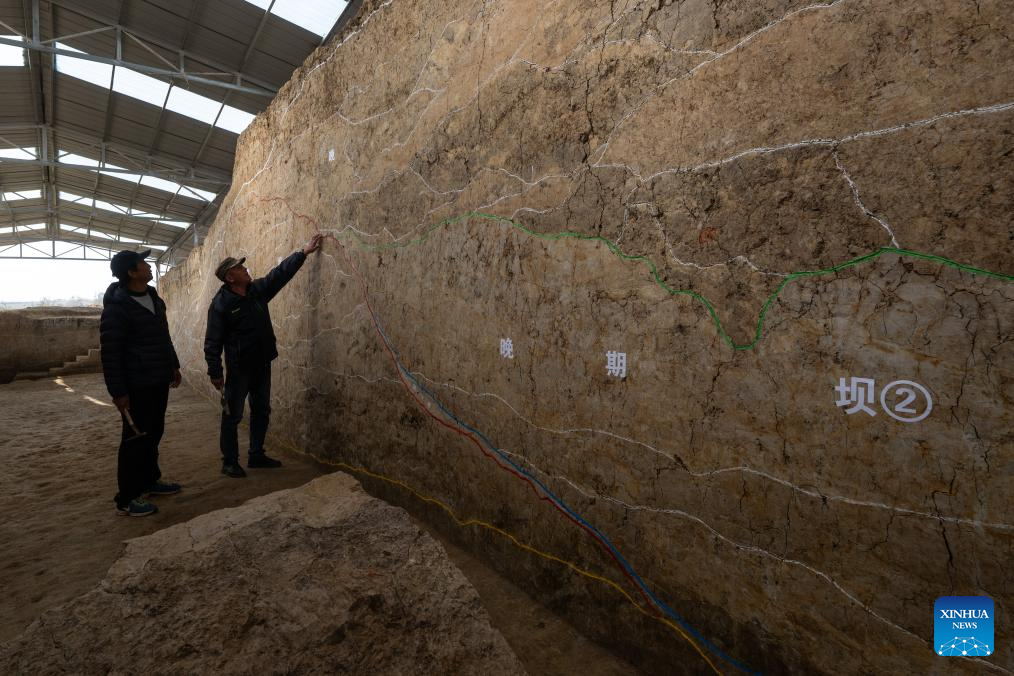
Archeologists work at the relics site of the Xiongjialing Dam in Jingmen, central China's Hubei Province, Dec. 4, 2023. The Xiongjialing Dam, which was initially built around 5,100 years ago, is part of the Qujialing relics site in the city of Jingmen, central China's Hubei Province. The dam, complete with a reservoir and spillway, has been identified as China's earliest known water conservancy project.
The design of the dam suggests that ancient people in the area had learned to harness water based on the landform rather than simply implementing measures to defend themselves against floods, said He Nu, a researcher with the Institute of Archaeology, Chinese Academy of Social Sciences. (Xinhua/Xiao Yijiu)

Archeologists work at the relics site of the Xiongjialing Dam in Jingmen, central China's Hubei Province, Dec. 4, 2023. The Xiongjialing Dam, which was initially built around 5,100 years ago, is part of the Qujialing relics site in the city of Jingmen, central China's Hubei Province. The dam, complete with a reservoir and spillway, has been identified as China's earliest known water conservancy project.
The design of the dam suggests that ancient people in the area had learned to harness water based on the landform rather than simply implementing measures to defend themselves against floods, said He Nu, a researcher with the Institute of Archaeology, Chinese Academy of Social Sciences. (Xinhua/Xiao Yijiu)

An archeologist works at the relics site of the Xiongjialing Dam in Jingmen, central China's Hubei Province, Dec. 4, 2023. The Xiongjialing Dam, which was initially built around 5,100 years ago, is part of the Qujialing relics site in the city of Jingmen, central China's Hubei Province. The dam, complete with a reservoir and spillway, has been identified as China's earliest known water conservancy project.
The design of the dam suggests that ancient people in the area had learned to harness water based on the landform rather than simply implementing measures to defend themselves against floods, said He Nu, a researcher with the Institute of Archaeology, Chinese Academy of Social Sciences. (Xinhua/Xiao Yijiu)
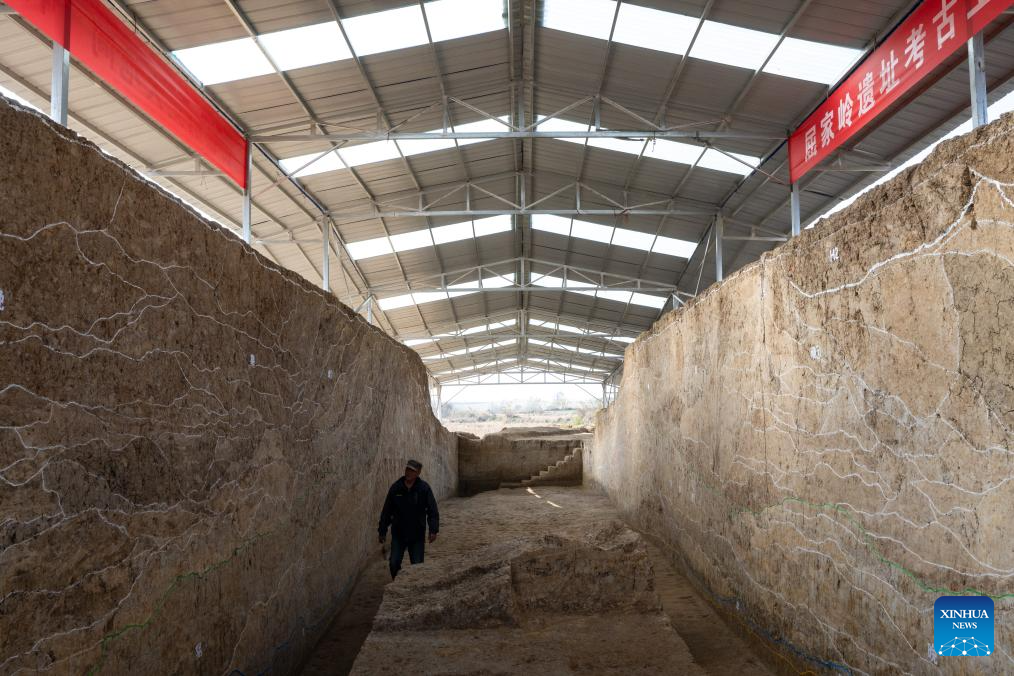
An archeologist works at the relics site of the Xiongjialing Dam in Jingmen, central China's Hubei Province, Dec. 4, 2023. The Xiongjialing Dam, which was initially built around 5,100 years ago, is part of the Qujialing relics site in the city of Jingmen, central China's Hubei Province. The dam, complete with a reservoir and spillway, has been identified as China's earliest known water conservancy project.
The design of the dam suggests that ancient people in the area had learned to harness water based on the landform rather than simply implementing measures to defend themselves against floods, said He Nu, a researcher with the Institute of Archaeology, Chinese Academy of Social Sciences. (Xinhua/Xiao Yijiu)
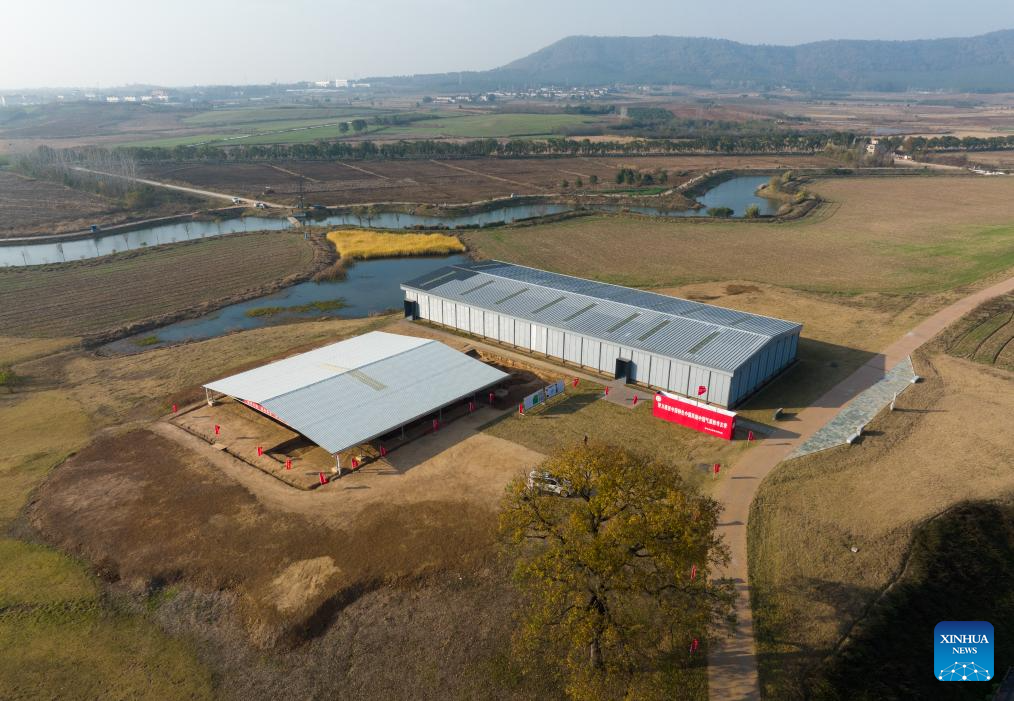
This aerial photo taken on Dec. 4, 2023 shows a view of the Qujialing relics site in Jingmen, central China's Hubei Province. The Xiongjialing Dam, which was initially built around 5,100 years ago, is part of the Qujialing relics site in the city of Jingmen, central China's Hubei Province. The dam, complete with a reservoir and spillway, has been identified as China's earliest known water conservancy project.
The design of the dam suggests that ancient people in the area had learned to harness water based on the landform rather than simply implementing measures to defend themselves against floods, said He Nu, a researcher with the Institute of Archaeology, Chinese Academy of Social Sciences. (Xinhua/Xiao Yijiu)
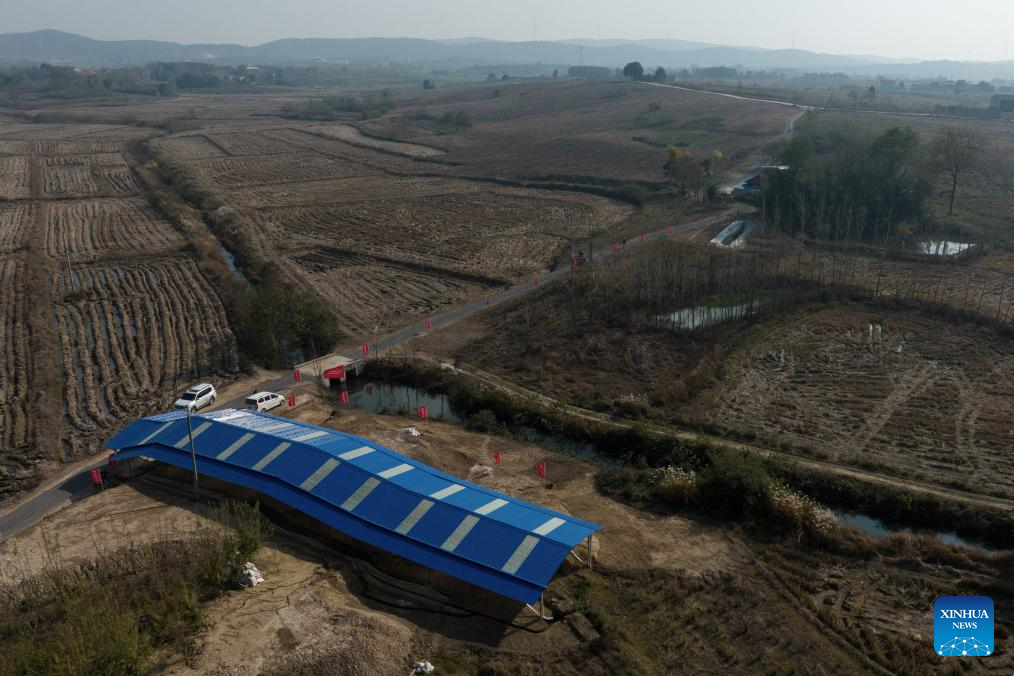
This aerial photo taken on Dec. 4, 2023 shows the relics site of the Xiongjialing Dam in Jingmen, central China's Hubei Province. The Xiongjialing Dam, which was initially built around 5,100 years ago, is part of the Qujialing relics site in the city of Jingmen, central China's Hubei Province. The dam, complete with a reservoir and spillway, has been identified as China's earliest known water conservancy project.
The design of the dam suggests that ancient people in the area had learned to harness water based on the landform rather than simply implementing measures to defend themselves against floods, said He Nu, a researcher with the Institute of Archaeology, Chinese Academy of Social Sciences. (Xinhua/Xiao Yijiu)
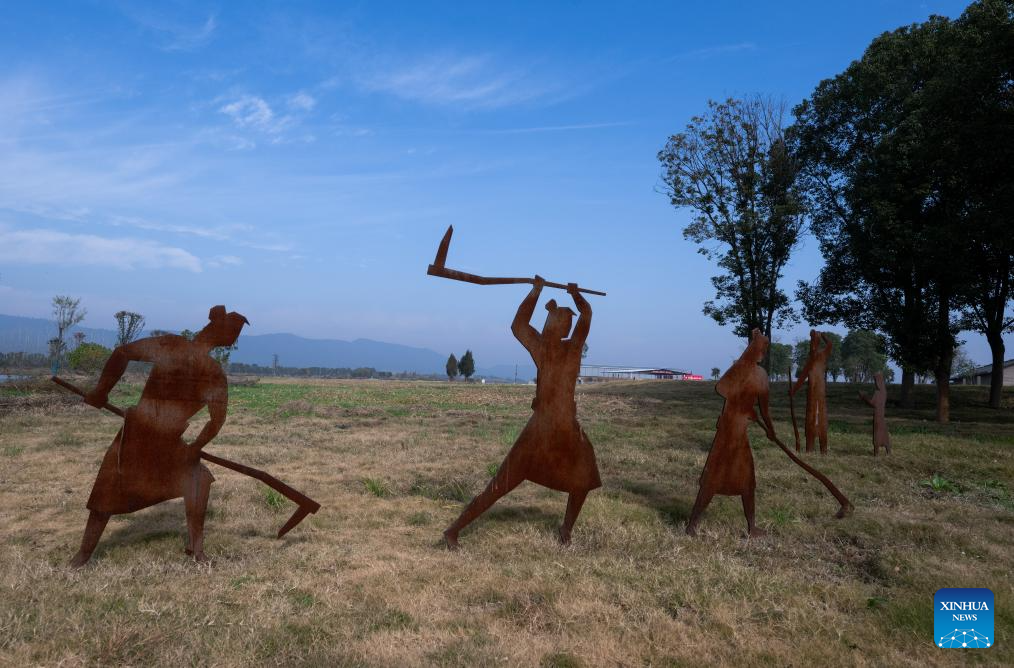
This photo taken on Dec. 5, 2023 shows a view of the Qujialing relics site in Jingmen, central China's Hubei Province. The Xiongjialing Dam, which was initially built around 5,100 years ago, is part of the Qujialing relics site in the city of Jingmen, central China's Hubei Province. The dam, complete with a reservoir and spillway, has been identified as China's earliest known water conservancy project.
The design of the dam suggests that ancient people in the area had learned to harness water based on the landform rather than simply implementing measures to defend themselves against floods, said He Nu, a researcher with the Institute of Archaeology, Chinese Academy of Social Sciences. (Xinhua/Xiao Yijiu)

This aerial photo taken on Dec. 4, 2023 shows a view of the Qujialing relics site in Jingmen, central China's Hubei Province. The Xiongjialing Dam, which was initially built around 5,100 years ago, is part of the Qujialing relics site in the city of Jingmen, central China's Hubei Province. The dam, complete with a reservoir and spillway, has been identified as China's earliest known water conservancy project.
The design of the dam suggests that ancient people in the area had learned to harness water based on the landform rather than simply implementing measures to defend themselves against floods, said He Nu, a researcher with the Institute of Archaeology, Chinese Academy of Social Sciences. (Xinhua/Xiao Yijiu)



